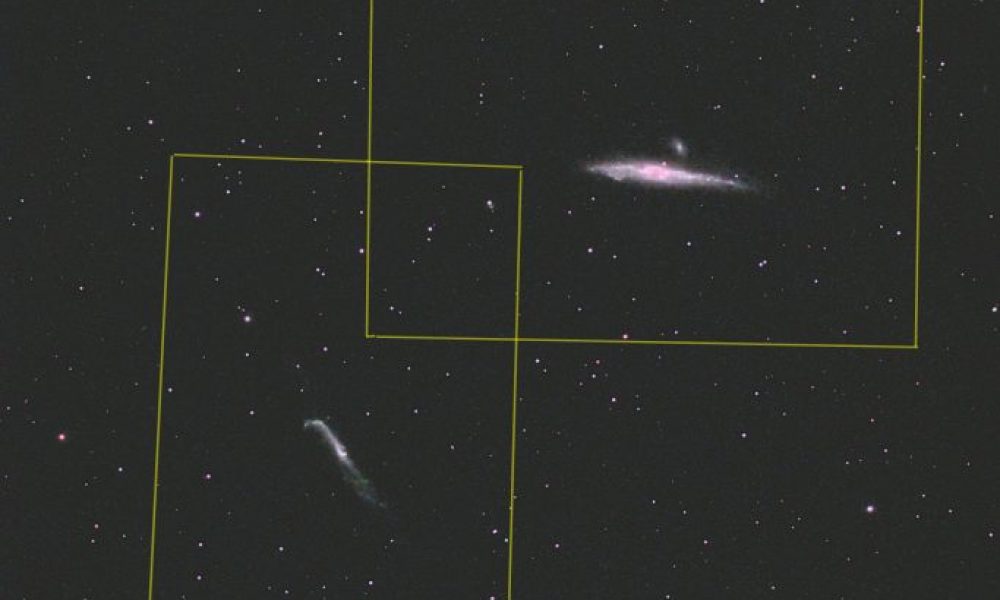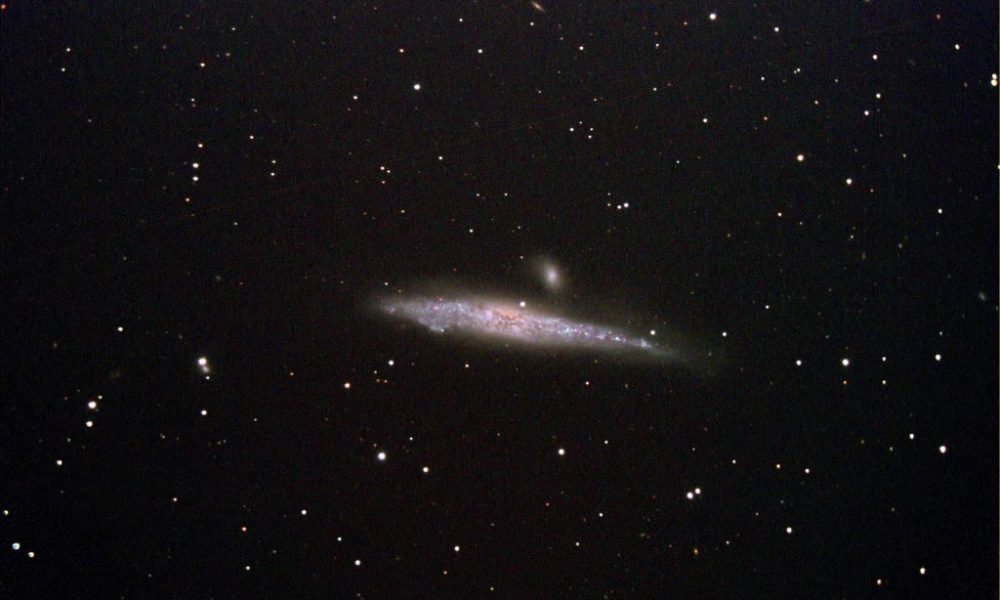Spring and early summer is a good time for observing galaxies because at night we are then looking out of the plane of our own galaxy (the Milky Way), with it’s obscuring dust and gas, and deep into interstellar space. Tucked under the handle of the big dipper are many interesting galaxies and clusters of galaxies, including the Whale Galaxy and the Hockey Stick Galaxy. Today Lookout Observatory brings you images of interacting galaxies. (In each picture north is up.)
The first picture is a photo of the sky under the big dipper, whose stars are shown connected by green lines. (Ignore the extra green line at the top left. It belongs to another constellation.) The area outlined by the yellow box (about 1.3 degrees by 2 degrees), which contains our two galaxies of interest, is only about 6 degrees from the North Galactic Pole, a spot in the sky completely perpendicular to the plane of our Milky Way.
The second picture is of the area covered by the yellow box in the first picture, but magnified 45 times. The galaxies are the two streaks of light (each centered in its own pale yellow box). As their names suggest, the Whale is the upper right one, and the Hockey Stick is the lower left one. These galaxies appear close together not just because they are in the same line of sight, but because they are actually close together in space. All the individual stars in this picture are foreground stars in our own galaxy, mostly from a few dozen to a few hundred light years away. But these two galaxies are about 30 million light years away.
The third image is of the area in the box around the Whale (also known as NGC 4631), but at 3 times the magnification. This is a spiral galaxy, about the same size as the Milky Way, that we are seeing edge-on. You can see its yellow-orange core where intense star formation is occurring (a so-called starburst region), its dark obscuring dust clouds, its areas with hot blue clusters of stars, and its knots of red star-forming regions filled with glowing hydrogen gas. A smaller elliptical companion galaxy, NGC 4627, sits just above the Whale. And a few other much more distant galaxies, which appear as just tiny elongated blurs, can be seen in this image.
The fourth image is of the area around the Hockey Stick (also known as NGC 4656). The area where it curves sharply has been given a separate designation, NGC 4657. This may be just a part of the larger galaxy, but some have suggested it might be a separate smaller galaxy that is merging with the larger one. There is also speculation that the very faint smear of blue visible just above and to the left of the Hockey Stick may be a separate irregular galaxy. The Whale, the small galaxy just above it, and the Hockey Stick, and possibly a few other galaxies in the vicinity all interact gravitationally with each other, causing their irregular, distorted appearances. They are known as the NGC 4631 Group. It is possible that the Whale and the Hockey Stick may eventually merge together. X-ray images reveal matter streaming between the two galaxies. Just imagine the powerful gravitational forces that allow things as large as galaxies to pull each other apart!
Keep looking up,
Carter, (sometime) Resident Astronomer,
Lookout Observatory



